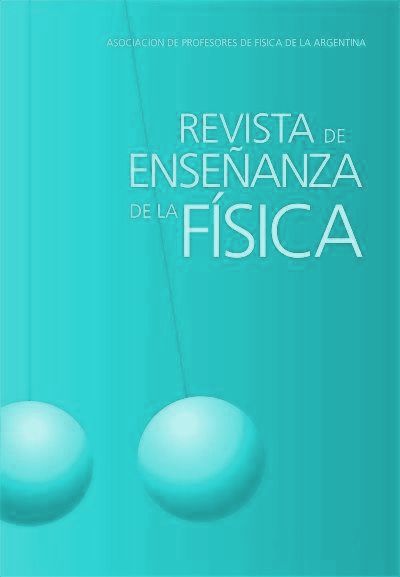Looks to the sky: 20 years of education and diffusion of astronomy for all ages
Keywords:
Teaching of astronomy, Astronomical diffusion, Sky observation, Public communication of scienceAbstract
Looks to the sky is an extension program whose main goal is to teach and diffuse astronomy throughout proposals related to the observation with the naked eye of the sky. It is carried out jointly between the National University of Río Negro and the Institute of Continuing Teacher Training of El Bolsón, developing its activities based on a work team made up of teachers and middle-level students called Osiris Astronomical Group, which works in the towns of El Bolsón and Bariloche, Río Negro. This group meets after school hours to learn about astronomy and, at the same time, to organize activities aimed at other students and the community in general. As part of the program, educational materials are produced, school projects are implemented, and research and publications on astronomy didactics are carried out. At the same time, workshops are held in schools, talks for all audiences, educational videos, mobile planetarium shows, teacher training courses, Young Astronomers Meetings, sky observations, and public conferences related to solar eclipses are made. The project began in 2005 and has reached more than 60,000 people, having obtained different distinctions. Here is a summary of what has been done and an evaluation of the achievements.
References
Álvarez, M., Galperin, D. y Quinteros, C. (2018). Indagación de las concepciones de estudiantes primarios y secundarios sobre los fenómenos astronómicos cotidianos. En Papini, M. (Comp.), Las ciencias de la naturaleza y la matemática en el aula: nuevos desafíos y paradigmas, 129-142. Tandil: UNICEN.
Baxter, J. (1989). Children’s understanding of familiar astronomical events. International Journal of Science Education, 11(5), 502-513. DOI: 10.1080/0950069890110503
Black, A. (2005). Spatial ability and Earth science conceptual understanding. Journal of Geoscience Education, 53(4), 402-414. DOI: 10.5408/1089-9995-53.4.402
Chiras, A. & Valanides, N. (2008). Day/night cycle: mental models of primary school children. Science Education International, 19(1), 65-83.
Galperin, D. y Raviolo, A. (2014). Sistemas de referencia en la enseñanza de la Astronomía. Un análisis a partir de una revisión bibliográfica. Latin American Journal of Physics Education, 8(1), 136-148.
Galperin, D. (2016). Sistemas de referencia y enseñanza de las ciencias: el caso de los fenómenos astronómicos cotidianos (Tesis doctoral). Tandil: UNICEN. DOI: 10.13140/RG.2.2.17573.63202
Galperin, D., Prieto, L. y Heredia, L. (2018). Concepciones de docentes sobre las causas de los fenómenos astronómicos cotidianos. En Papini, M. (Comp.), Las ciencias de la naturaleza y la matemática en el aula: nuevos desafíos y paradigmas, 116-128. Tandil: UNICEN
Plummer, J. (2008). Students’ development of astronomy concepts across time. Astronomy Education Review, 7(1), 139-148. DOI: 10.3847/AER2008013
Plummer, J., Kocareli, A. & Slagle, C. (2014). Learning to explain astronomy across moving frames of reference: Exploring the role of classroom and planetarium-based instructional contexts. International Journal of Science Education, 36(7), 1083-1106. DOI: 10.1080/09500693.2013.843211
Schoon, K. (1992). Students’ alternative conceptions of Earth and space. Journal of Geological Education, 40(3), 209-214. DOI: 10.5408/0022-1368-40.3.209
Trumper, R. (2001). Assessing students’ basic astronomy conceptions from junior high school through university. Australian Science Teachers Journal, 47(1), 21–31. DOI: 10.1080/02635140120046259
Vega Navarro, A. (2007). Ideas, conocimientos y teorías de niños y adultos sobre las relaciones Sol-Tierra-Luna. Estado actual de las investigaciones. Revista de Educación, 342, 475-500.
Vosniadou, S. & Brewer, W. (1994). Mentals models of the day/night cycle. Cognitive Science, 18, 123-183.
Downloads
Published
How to Cite
Issue
Section
License

This work is licensed under a Creative Commons Attribution-NonCommercial-NoDerivatives 4.0 International License.
Aquellos autores/as que tengan publicaciones con esta revista, aceptan los términos siguientes:Los autores/as conservarán sus derechos de copiar y redistribuir el material, bajo los términos estipulados en la Licencia de reconocimiento, no comercial, sin obras derivadas de Creative Commons que permite a terceros compartir la obra bajo las siguientes condiciones:
- Reconocimiento — Debe reconocer adecuadamente la autoría, proporcionar un enlace a la licencia e indicar si se han realizado cambios. Puede hacerlo de cualquier manera razonable, pero no de una manera que sugiera que tiene el apoyo del licenciador o lo recibe por el uso que hace.
- NoComercial — No puede utilizar el material para una finalidad comercial.
- SinObraDerivada — Si remezcla, transforma o crea a partir del material, no puede difundir el material modificado.
- Los autores/as podrán adoptar otros acuerdos de licencia no exclusiva de distribución de la versión de la obra publicada (p. ej.: depositarla en un archivo telemático institucional o publicarla en un volumen monográfico) siempre que se indique la publicación inicial en esta revista.
- Se permite y recomienda a los autores/as difundir su obra a través de Internet (p. ej.: en archivos telemáticos institucionales o en su página web) antes y durante el proceso de envío, lo cual puede producir intercambios interesantes y aumentar las citas de la obra publicada. (Véase El efecto del acceso abierto).














